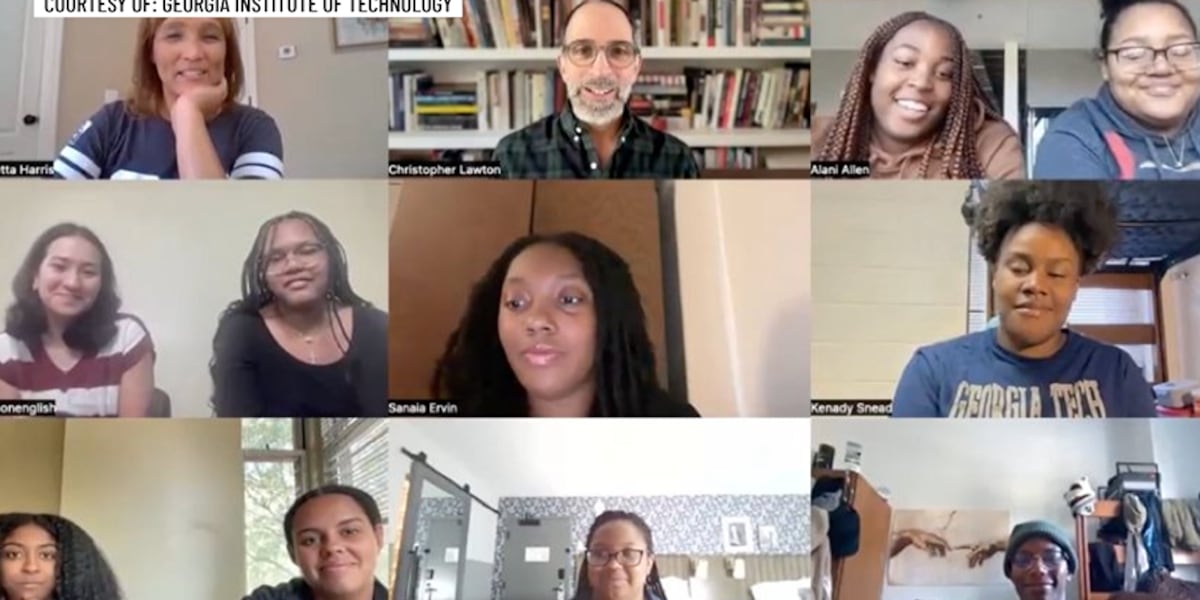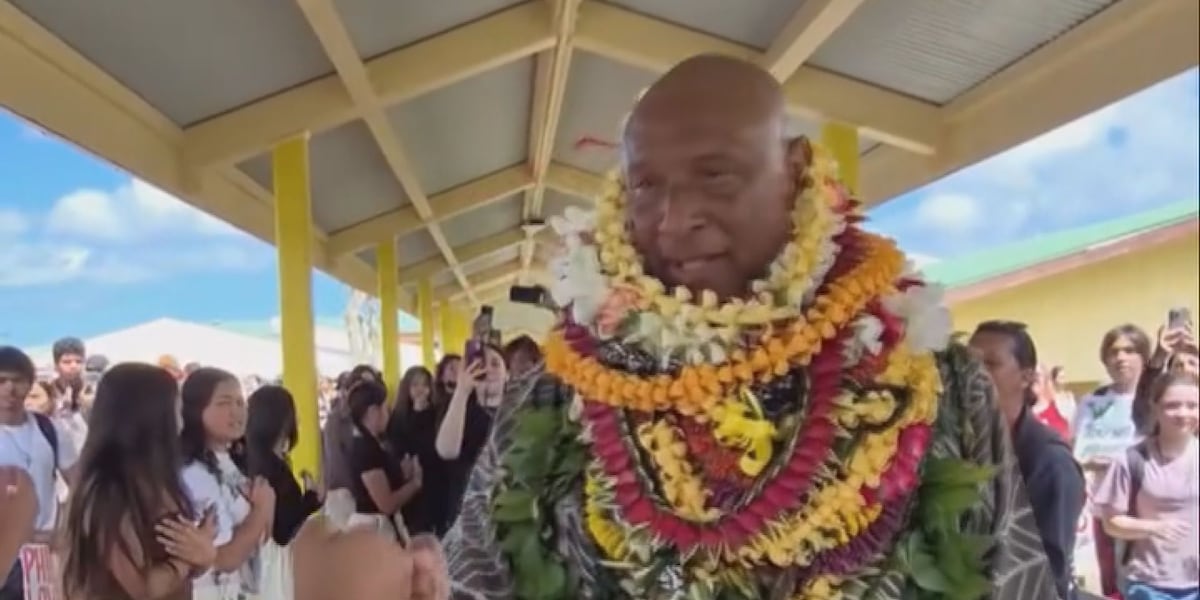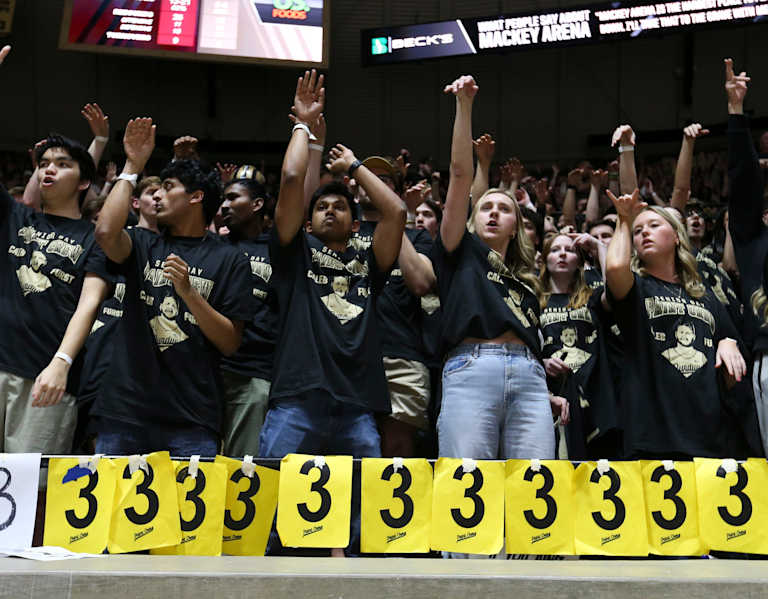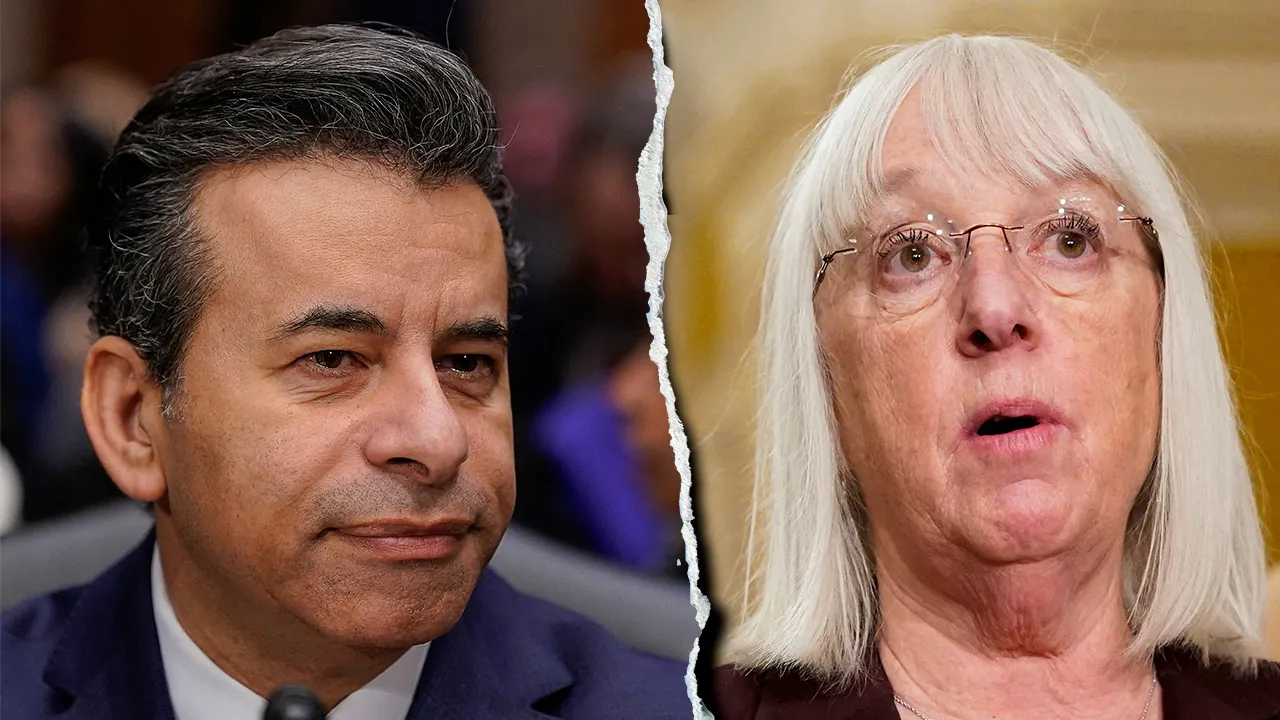New York
The U.S. Open Is King of New York. Could It Do More for Queens?

The U.S. Open tennis tournament will celebrate the 50th anniversary of equal prize money for men and women in the event, part of a legacy of equality and inclusion of which the Open is extremely proud. But many close neighbors of the U.S. Open have not always felt so included.
On 111th Street and Roosevelt Avenue, in the shadow of the No. 7 train’s elevated tracks, thousands of people go about their business during the U.S. Open while having virtually no interaction with one of the most popular and profitable sporting events in the world.
Kamal Alma and his family have owned the 111 Corona Discount & Candy Store, less than half a mile from Arthur Ashe Stadium, for over 40 years. Occasionally, during the week of qualifying and the two weeks of competition, some of the event’s temporary workers filter into Alma’s store. But he rarely sees tennis fans there and does not gain any noticeable uptick in business from the event. His children like tennis, but tickets for the main draw are too expensive.
“Plus, I’m working all the time,” he said. “Who knows, maybe someday I’ll go.”
The U.S. Open is one of New York City’s landmark events, drawing international attention to Queens while generating huge profits and employing about 7,000 seasonal workers from around New York. But for some, it could be a better neighbor.
“We are happy it’s here,” said Donovan Richards, the Queens borough president. “It’s definitely an economic driver for the borough, for the city. But if it’s not benefiting the local community, what good is that for the people of Queens? When the three weeks is over, we’re still here.”
Richards said that he had just recently begun to dig deeper into how the U.S. Open engaged with the local community and that he planned to attend an event hosted by the United States Tennis Association on Tuesday to discuss those matters. He said he recognized and appreciated that the Open donated money to Flushing Meadows Corona Park, on which the Billie Jean King National Tennis Center sits in its 40-acre corner, and provided funds to enhance local community projects. He just wants to see more of it, commensurate with the huge sums produced by the event each year.
“I look forward to sitting down with the leadership to really think about ways this partnership can benefit the fans, the tournament and the borough,” he said. “Not to say they don’t give support. We need to see that support ramped up to address inequities outside the park and in the park.”
More than 888,000 spectators attended the U.S. Open last year, and at least that many are expected this year at an event that is in some ways an annual contrast of culture and class.
Many fans will drive there on the crowded parkways and highways adjacent to the stadium. Some will ride the commuter rails from Manhattan, Long Island and New Jersey, and others will squeeze onto the No. 7 train from Grand Central Station. And when they have seen the last ball struck for the day, most will make their way back in the same fashion, without setting foot in the nearby streets and restaurants of Corona, Flushing or Jackson Heights or ambling into the adjacent park, where soccer and volleyball players mix with in-line skaters, joggers and picnickers.
“We never lose sight of the fact that we are in a public park,” said Daniel Zausner, the National Tennis Center’s chief operating officer. “We want to be a bigger player in the community, always.”
The U.S.T.A. offers free admission to a week of professional tennis during the qualifying tournament before the main draw, providing an opportunity to attract future fans.
Omar Minaya, the former general manager of the Mets baseball club and now a senior adviser for the Yankees, grew up in Corona just a few blocks from where the Open site is now. He and his friends played football and baseball in the park before the Open moved to Flushing Meadows in 1978, and boxing was a popular sport in Corona, too. Few of the kids played tennis. Minaya said he still saw a positive overall effect from the event but recognized that it was not for everyone.
“It’s brought a lot of attention to Queens, and that’s good,” he said. “But most of the people that go to the Open, they aren’t going into Corona. It’s more of a corporate crowd than a local crowd.”
Lew Sherr, the chief executive of the U.S.T.A., said economic activity from the Open filtered across the region, and he pointed to a decade-old study that put the annual economic impact of the tournament at $750 million for the New York City area. He estimated that a similar study now would double that figure.
But in Corona and nearby Elmhurst, two areas devastated by the Covid-19 pandemic, many residents have little or no interaction with the U.S. Open.
Carlos Inga owns the Super Star II food stand in Corona Plaza, just off Roosevelt Avenue and 103rd Street. He has lived in Queens for 20 years but has never been to the U.S. Open, nor have any of his friends, he said. Sometimes he will see employees wearing U.S. Open shirts and badges, but rarely any fans, unless they get off at the wrong subway stop by accident.
“There is definitely a disconnect,” Richards, the borough president, said. “Although the stadium sits less than a mile away, it has no connection. Those are the questions we will be raising on Tuesday. The same goes for the airports and the new soccer stadium. How do they impact the neighborhood?”
Since moving to the Corona and Flushing area from its previous location at the tony West Side Tennis Club in Forest Hills, Queens, the U.S. Open has sat in its corner of the park pumping out revenue for the nonprofit U.S.T.A., which pays the city a percentage in rent for the privilege. In 2022, the event raised $472 million and paid close to $5 million in rent. The U.S.T.A. builds and pays for the infrastructure, including the stadiums, and more than 40 percent of the 7,000 seasonal employees are from Queens.
“I love working here,” said Yvette Varga, a regular seasonal maintenance worker at the Open, who is originally from Ozone Park in Queens but now lives in the Bronx. “We would always go to this park, and still, every year, we have at least one cookout here. So for me, it’s like home.”
Some employees have not had such a favorable experience. In 2022, three employees accused a U.S. Open subcontractor of wage theft during the previous year’s event, and the funds were ultimately restored after Zausner’s intervention.
“I wish I had known in September so I could have acted upon it then, instead of hearing about it 11 months later,” Zausner said.
In 2019, Scott Stringer, the New York City comptroller at the time, charged that the National Tennis Center had underreported $31 million in revenue from 2014 to 2017 and therefore had underpaid rent by more than $300,000. The U.S.T.A., in a letter to the deputy comptroller dated Nov. 16, 2020, and obtained by The New York Times through a Freedom of Information Law request, concurred with a shortfall of $143,296.61 and paid it.
The N.T.C. also donates funds for the upkeep of the park, but more attention seems to be focused closer to the tennis center, where park benches along the path surrounding the perimeter fence bore “wet paint” signs on Tuesday. Farther away, the paint was chipped off the benches and litter was more evident.
“If you look, it’s not as nice as you move away from the stadium,” said Tina Chen, a Flushing resident and a senior at Yale University who was walking her dog, Coco, in the park. “I think it’s good to have the U.S. Open here, for sure. But maybe they could do more to fix up the rest of the area, too.”

New York
New York Attorney General Recuses Herself From Inquiry Into Prison Death

For the second time in three months, the office of New York’s attorney general, Letitia James, said it was recusing itself from investigating the death of a prisoner whom other inmates said was brutally beaten by guards.
As occurred in the case of the earlier death, a special prosecutor will take over the inquiry into the death of Messiah Nantwi, 22, who died last week after being held at Mid-State Correctional Facility in central New York, Ms. James’s office said in a statement on Thursday.
The statement said the recusal was necessary because lawyers in her office were already defending four of the 15 corrections employees involved in the events that preceded the death in unrelated civil lawsuits.
Ms. James appointed William J. Fitzpatrick, the Onondaga County district attorney, as the special prosecutor. Just last month, Mr. Fitzpatrick brought charges against 10 officers in connection to the killing of another prisoner, Robert L. Brooks. Six of the officers were charged with murder.
This is a developing story and will be updated.
New York
G.O.P. Representatives and Democratic Mayors Spar Over Sanctuary Cities

House Republicans on Wednesday accused the Democratic mayors of New York, Denver, Boston and Chicago of harboring criminal immigrants in an acrimonious congressional hearing over what role large cities should have in the Trump administration’s immigration crackdown.
Under fiery and angry questioning from Republicans on the House Oversight Committee, the mayors defended their policies and their cities’ efforts to house and feed migrants, tens of thousands of whom were bused to their communities by Republican governors. The mayors rejected the notion that the local police should help in the administration’s deportation efforts.
“We do not have the capacity for our law enforcement to be doing federal immigration enforcement,” Mayor Mike Johnston of Denver told lawmakers. “But we want to be partners in making sure we are pulling violent criminals off the street.”
Mr. Johnston spoke of the influx of 42,000 migrants two years ago, many bused from Texas, “mostly women and children in 10-degree weather with only sandals and a T-shirt.”
The hearings seemed to capture the political moment. It was a clash of the law-and-order Republican Party led by President Trump and liberal politicians running cities, broadly known as sanctuary cities, that have large populations of immigrants.
Even the language employed by both sides underlined the stark differences in the ways the two parties approach the issue. The chairman of the committee spoke of “illegal aliens,” a term now out of favor among Democratic leaders and immigrant advocates, who prefer the term “undocumented.”
At the heart of the hearing was a question seemingly unique to America’s decentralized political system — the extent to which one segment of government is allowed to curb its cooperation with another.
Republicans are seeking a more proactive approach by cities, saying that local police departments should be doing more to facilitate the transfer of undocumented immigrants to the federal authorities. Democrats counter that if cities were deputized to help enforce federal immigration laws, they would have to divert resources away from other priorities, such as investigating crimes and apprehending violent criminals.
“There is no place in America, not one, that actually provides sanctuary from federal law,” Representative Dave Min of California, a Democrat, said at the hearing. “The real issue here is whether state and local governments should spend scarce taxpayer dollars to help the federal government enforce its immigration priorities.”
Republicans repeatedly sought to induce the mayors into the kind of stumbles that derailed the presidents of Harvard and the University of Pennsylvania, who lost their jobs after testifying before Congress about campus antisemitism.
At the start of the hearings, the committee’s chairman, Representative James Comer, Republican of Kentucky, referred to a number of cases where undocumented immigrants were charged with rape or murder. He asked the mayors whether they would hand over the “criminal” to the federal Immigration and Customs Enforcement, or ICE.
“Our local law enforcement works hard every day to get criminals off the streets of Chicago,” replied Mayor Brandon Johnson of Chicago.
Mr. Comer interjected, “Will you turn that criminal over to ICE?”
“We do not harbor criminals,” Mr. Johnson said, adding details of criminal procedure without directly answering the question.
The exchange ended with Mr. Comer concluding that it proved that Democratic mayors were shielding criminals from federal law enforcement.
“We have to have cooperation,” he said.
The past several years have seen record levels of unauthorized immigration into the United States, and Americans have become more supportive of stemming the flow. A poll from The New York Times and Ipsos in January found that a vast majority of Americans — 87 percent — supported deporting undocumented immigrants with a criminal record. A majority said they favored “deporting all immigrants who are here illegally.”
Republicans stepped up their confrontational tone as the hearings wore on, with Representative Nancy Mace, Republican of South Carolina, asking questions like whether the mayors hated President Trump more than they loved their country. She accused the mayors of having “blood on your hands.”
A number of Republican lawmakers who spoke at the hearing said the mayors were violating federal laws and should be prosecuted. They cited specific cases where people had been attacked or killed by undocumented migrants, suggesting cities’ immigration polices had contributed to those crimes.
“Every one of you is exposed to criminal culpability here,” Andy Biggs, Republican of Arizona, told the mayors. “That’s the reality of it.”
Several times in the hearings the mayors turned Republicans’ accusations back on them to try to score their own political points, urging them to focus on the economy, pass immigration reform, strengthen gun laws and oppose other Trump administration policies the mayors described as harmful.
“If you wanted to make us safe, pass gun reforms,” Mayor Michelle Wu of Boston said.
At another point, Ms. Wu spoke to the damage that deporting large numbers of migrants would have on cities.
“I do not support mass deportation,” she said. “That would be devastating for our economy. There are millions of people who are running our small businesses, going to our schools.”
Mayor Eric Adams of New York, who has talked of allowing ICE into jails in spite of his city’s sanctuary laws, did not come under the same level of scrutiny from Republicans.
But he was questioned by Democrats about accusations that he had engaged in a quid pro quo with the Trump administration, which dropped federal corruption charges against him, saying that it needed his help on immigration. Representative Robert Garcia, Democrat of California, called on Mr. Adams to resign; the mayor said he had done nothing wrong.
Mr. Adams grew weary of the line of questioning. “It appears as though we’re asking the same questions over and over and over again,” he told Representative Jasmine Crockett, Democrat of Texas. “My comments are not going to change. No quid pro quo, no agreement. I did nothing wrong.”
Although Republicans spared Mr. Adams from the most aggressive questioning, the vision he laid out did not fully jibe with the Trump administration’s talking points.
“I must create an atmosphere that allows every law-abiding resident, documented or not, to access vital services without fear of being turned over to federal authorities,” he said during the hearing.
Emma G. Fitzsimmons and Maya C. Miller reported from Washington and Thomas Fuller from San Francisco. Jack Healy and Patricia Mazzei contributed reporting.
New York
Trump Threatens Columbia With Millions in Cuts Over Antisemitism Claims

The Trump administration is threatening to cut tens of millions of dollars in federal funding for Columbia University, making the school the first major target in its effort to root out what it considers antisemitic harassment on college campuses.
A comprehensive review of Columbia University’s federal contracts and grants was announced Monday night, shortly after Linda McMahon was confirmed as the secretary of education in a party-line vote.
The review, which will be led by the Department of Health and Human Services, the Department of Education and the General Services Administration, has already identified $51.4 million in contracts between Columbia and the federal government that could be subject to stop-work orders. Health and Human Services said in a news release that the review was necessary “given Columbia’s ongoing inaction in the face of relentless harassment of Jewish students.”
Far more could be on the line: A federal task force will conduct a comprehensive review of the “more than $5 billion in federal grant commitments to Columbia University to ensure that the university is in compliance with federal regulations, including its civil rights responsibilities,” the news release said.
Much of that money flows through Columbia’s Irving Medical Center, one of the largest academic medical centers in the country. In announcing the review, Robert F. Kennedy Jr., the new health secretary, said in a statement that “antisemitism — like racism — is a spiritual and moral malady that sickens societies and kills people with lethalities comparable to history’s most deadly plagues.”
More than a quarter of Columbia’s $6.6 billion in annual operating revenue comes from federal sources, according to its 2024 financial statements. Of that, about $1.3 billion comes from federal research grants, the category of revenue most immediately at risk from this review.
The National Institutes of Health gives the most federal research money to Columbia, providing $747 million in 2023. An additional $206 million came from other Health and Human Services programs.
Columbia said in a statement Monday evening that it was reviewing the announcement and that it looked forward “to ongoing work with the new federal administration to fight antisemitism.”
The nation’s research universities stand to lose billions in federal funding because of Trump administration actions. For example, a new policy regarding overhead costs will have drastic effects on institutions that rely on N.I.H. grants. Under the new measure, the additional money that institutions get to offset overhead costs is capped at 15 percent of the total of the grant, instead of the 50 or 60 percent some universities receive. (That reduction is on hold because of a court decision.)
A letter to schools from the Department of Education also threatens to cut federal money to those that do not end diversity, equity and inclusion programs.
Columbia is additionally exposed to Trump administration pressure because of the prominence of its pro-Palestinian movement, whose tents overtook the university’s grassy quads last spring, giving rise to a wave of encampments nationally. The Trump administration considers many of the chants expressed at pro-Palestinian rallies, such as “From the river to the sea, Palestine will be free,” as antisemitic.
“Columbia is the only university named in all three investigations — a terrible trifecta — which leads us to the unappetizing conclusion that our alma mater will bear the brunt of whatever the Trump administration decides on,” said the Stand Columbia Society, a group of alumni that has been analyzing Columbia’s financial exposure to the Trump administration’s moves.
Dozens of pro-Palestinian Columbia students were arrested last spring after participating in the encampments and the takeover of Hamilton Hall, a campus building. But the disciplinary process is ongoing in most of these cases, and no expulsions have been announced. On Tuesday, a Columbia official, speaking on background to discuss student disciplinary matters, said that four students had already been suspended in connection with behavior related to Hamilton Hall and the encampments and that other cases were expected to be concluded shortly.
The loss of federal grant funding would be devastating, said Gil Zussman, a professor of electrical engineering at Columbia who has been calling for Columbia to take more aggressive action to protect Jewish and Israeli students from protesters who break rules.
“This crisis should be used by the Columbia leadership to make immediate changes related to enhancing and enforcing the university rules, despite objections from a vocal minority of faculty, most of whom do not rely on federal funding for research,” Dr. Zussman said.
Dr. Brent Stockwell, the chair of the department of biological sciences, said that threatening research funding was exactly the wrong lever for the Trump administration to pull to fight antisemitism, in part because many Jewish faculty members will lose their jobs if their funding is eliminated.
“They just don’t understand that if they wipe out all the Jewish researchers who are doing frontier, cutting-edge research, that will just make things more difficult,” said Dr. Stockwell, who is Jewish. “It’s adding salt into the wound.”
Representative Tim Walberg, the Republican chairman of the House Education and Work Force Committee, wrote in a Monday news release, “For more than a year, Columbia’s leaders have made public and private promises to Jewish students, faculty, and members of Congress that the university would take the steps necessary to combat the rampant antisemitism on Columbia’s campus. Columbia has failed to uphold its commitments, and this is unacceptable.”
Writing on Truth Social on Tuesday morning, President Trump underscored his stance regarding what he considered the appropriate penalty for pro-Palestinian demonstrators who take over a building and cause injury or property damage.
“All Federal Funding will STOP for any College, School, or University that allows illegal protests,” Trump wrote. “Agitators will be imprisoned/or permanently sent back to the country from which they came. American students will be permanently expelled or, depending on on the crime, arrested. NO MASKS!”
-

 Sports1 week ago
Sports1 week agoNHL trade board 7.0: The 4 Nations break is over, and things are about to get real
-

 News1 week ago
News1 week agoJustice Dept. Takes Broad View of Trump’s Jan. 6 Pardons
-

 World1 week ago
World1 week agoHamas says deal reached with Israel to release more than 600 Palestinians
-

 Science1 week ago
Science1 week agoKilling 166 million birds hasn’t helped poultry farmers stop H5N1. Is there a better way?
-

 News1 week ago
News1 week agoChristianity’s Decline in U.S. Appears to Have Halted, Major Study Shows
-
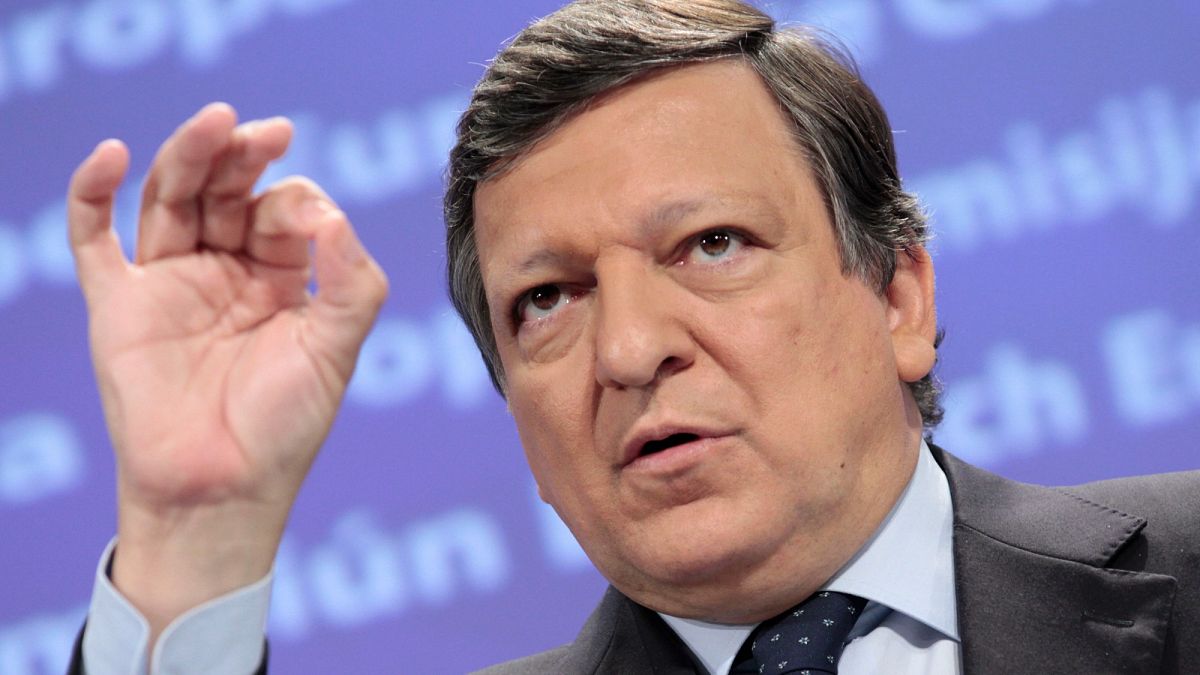
 World1 week ago
World1 week agoGermany's Merz ‘resolute and determined,' former EU chief Barroso says
-

 Technology1 week ago
Technology1 week agoMicrosoft makes Copilot Voice and Think Deeper free with unlimited use
-

 Politics1 week ago
Politics1 week agoSome Republicans Sharply Criticize Trump’s Embrace of Russia at the U.N.


